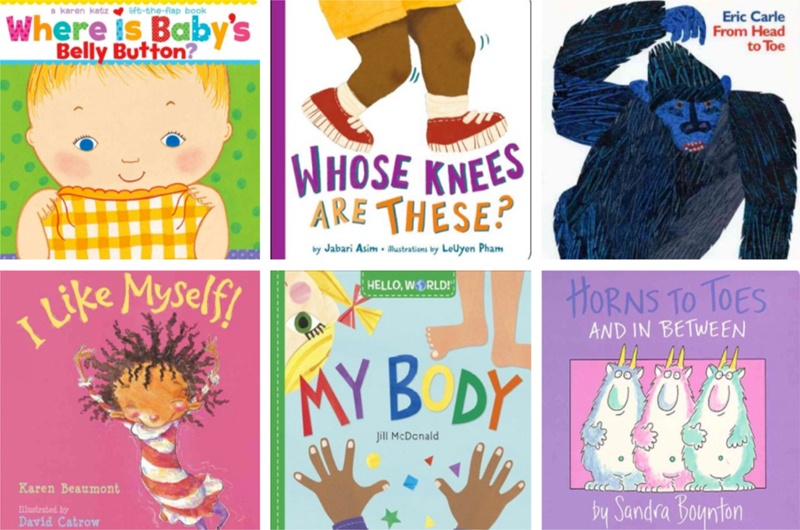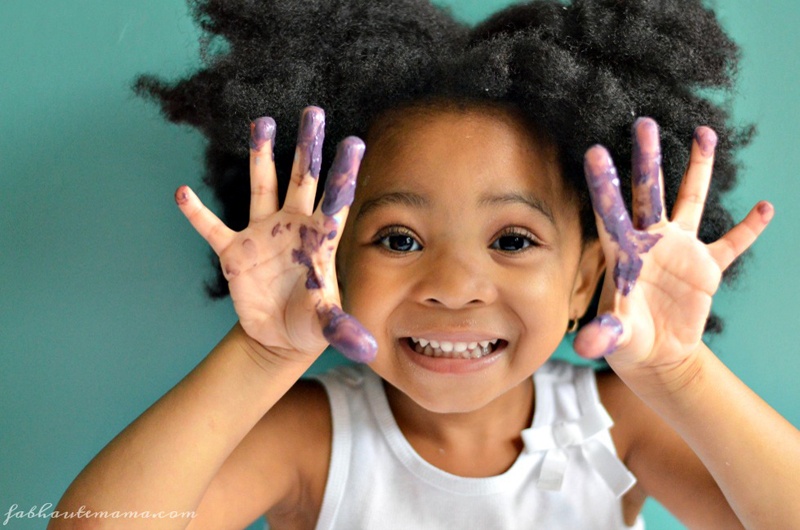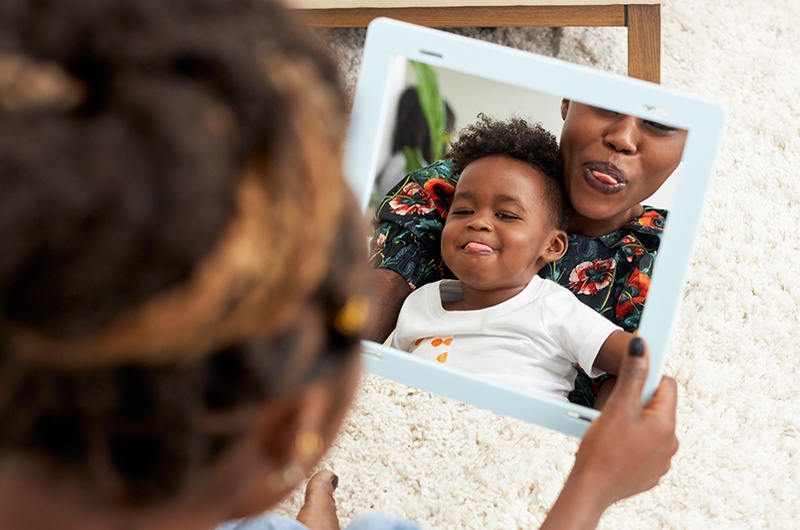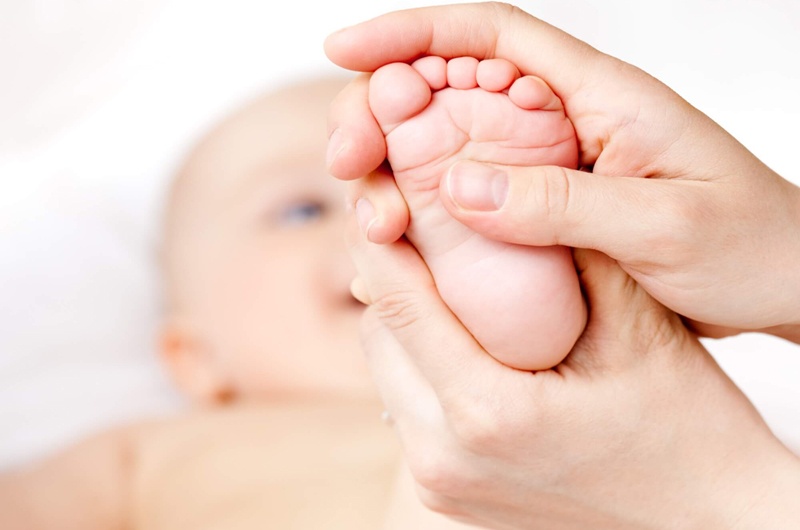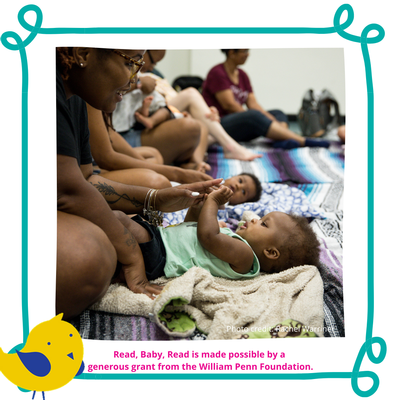Read, Baby, Read is a Free Library initiative focused on encouraging early literacy development among infants and young toddlers under two years old.
We work with 12 participating libraries across Philadelphia to reach caregivers of all ages, providing resources that support early literacy skills, language development, and purposeful play. In addition, you can find early literacy tips and resources on our Instagram page @read.baby.read!
Each month, we bring you fun activity ideas with a theme based on the five early literacy practices from Every Child Ready To Read: Read, Sing, Write, Play, and Talk!
So far, we’ve explored vehicles and animals.
This month is all about the body!
Learning and talking about the body is a great way to encourage children to develop "body awareness," which helps them learn how to move their muscles and navigate the world around them. When you try these body-themed activities, you are helping your baby not only gain literacy skills but also develop their motor skills, coordination, and spatial awareness!
READ
There are a lot of fantastic board books about the body available in the Free Library’s catalog. It’s easy to place holds online for free and schedule curbside pick-up at select neighborhood libraries.
- Where Is Baby’s Belly Button by Karen Katz
This lift-the-flap book about hidden body parts encourages babies to use their fine motor skills. (Watch Natasha read it on our Instagram.)
- Whose Knees Are These? by Jabari Asim
The rhyming text in this book is a loving, playful ode to knees. (Watch Natasha read it on our Instagram. You can also check out the companion title Whose Toes Are Those? read by Sarah.)
- From Head to Toe by Eric Carle
This interactive body parts book is a great way to incorporate movement into storytime. (Watch Sarah read it on our Instagram.)
- I Like Myself! by Karen Beaumont
The vibrant illustrations and energetic text in this story tell an important tale of body positivity.
- Hello, World! My Body by Jill McDonald
This informational book uses fun, simple language to help young toddlers learn interesting facts about their bodies.
- Horns to Toes and In Between by Sandra Boynton
For a silly version of body part stories, try this fun tale about monster bodies!
SING
Songs about body parts are great for babies because they usually involve movement and touch. In the following storytime, Natasha demonstrates how to incorporate gentle touch by singing "Where Oh Where are Baby’s Fingers?" Other songs about body parts encourage interactive movement, such as "If You’re Happy and You Know It, Clap Your Hands." If your baby is not yet old enough to move their own body with purpose, you can gently help them. Try singing a simplified version of "Hokey Pokey" by substituting general body parts instead of specifying left and right, and moving your baby’s body parts for them. "Head, Shoulders, Knees, and Toes" is another classic, but there are lots of variations too! For a monster version, check out Jbrary’s "Horns and Fangs." For a cat version, check out this storytime with Sarah. You can find many more body-themed songs, finger plays, and lap bounces on Jbrary’s Body Parts playlist.
WRITE
Painting activities that incorporate the body are great for making art a full-body sensory experience. Next time you paint, forego brushes or other painting utensils in favor of finger painting. For the littlest babies, try dipping their feet in paint and making footprint art. Be sure to use washable, taste-safe paint (try this edible paint recipe) so that you don’t have to worry about your baby making a mess of themselves—they may be more interested in painting themselves than the paper! Here’s another idea to consider if you don’t want your child painting on themselves: If you have a plastic doll, try letting your child paint on the doll while talking to them about the body parts they are painting.
PLAY
Mirror Play is a great way to encourage body awareness in children. Babies love looking at faces, even their own! Your baby may not yet realize they are looking at themselves in the mirror until they are a little older. Try putting a toy behind your baby while they are looking in the mirror. If they reach out to the mirror instead of behind themselves, it means they don’t yet realize that’s their reflection. Games like this are a great way to help them learn. You can also play body-focused games in the mirror by having them point to specific body parts, and even playing hide-and-seek with the mirror! Try adding a sensory component to the experience by letting your child paint on the mirror, or laying a mirror on the ground and placing loose parts or other sensory materials on top of it. Putting a baby-safe mirror on the floor is a great way to make tummy time more entertaining for babies as well!
TALK
Baby massage helps stimulate your baby’s muscles and senses, in addition to being a great bonding experience between you and your infant. Try adding a literacy component by talking while you massage your baby. Name the body parts as you touch them and use words to describe your movements such as "rub" and "tickle." Saying the word for a body part or action helps your baby connect the concept to the word itself. For more information about infant massage, check out this tutorial.
Be sure to follow us on Instagram for daily tips and resources about early literacy as well as weekly virtual baby storytimes. And stay tuned for next month’s installment of this blog series with a brand new theme!
Read Baby Read’s team includes Early Childhood Specialists, Sarah Jacknis and Natasha Smith, and Program Coordinator Naisha Tyler. If you have questions about our program, feel free to email Naisha Tyler at TylerN @ freelibrary.org.
Read Baby, Read is made possible by a generous grant from the William Penn Foundation.
Have a question for Free Library staff? Please submit it to our Ask a Librarian page and receive a response within two business days.

